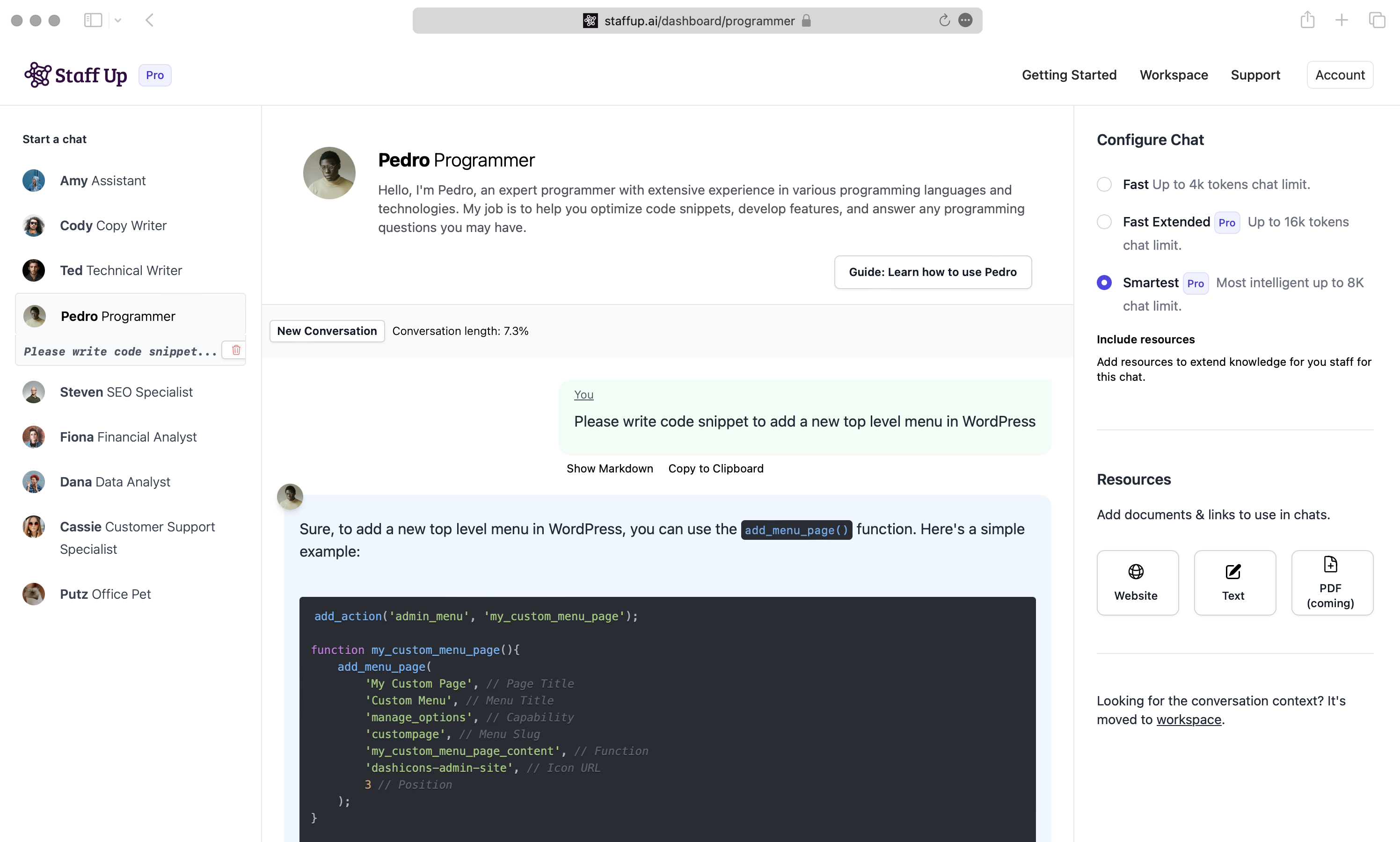AI tools like ChatGPT and GPT-4 are revolutionizing the way we generate content. However, the key to unlocking their full potential lies in effective prompt writing. This guide will delve deeper into the nuances of crafting effective prompts, offering practical tips and actionable examples.
Contextual Prompting: The Art of Effective Communication
AI models are akin to eager students - they thrive on context and clarity. The more specific and context-rich your prompts are, the more targeted the output. It's like having a conversation; the clearer you are, the more likely you'll get the response you want.
Example:
Instead of: "Write about marketing strategies."
Try: "Compose a 600-word blog post discussing the role of social media in marketing strategies for small businesses in the fashion industry."
In-depth Tip: Remember, the AI doesn't know your specific context or background. So, it's essential to provide all relevant details in the prompt itself. Think of it as briefing a new team member who's eager to help but needs clear instructions.
Providing Examples and Defining Formats: A Picture is Worth a Thousand Words
Including examples in your prompts helps AI models understand the type of response you're aiming for. It's like showing a picture to an artist before they start painting. This is particularly beneficial for tasks involving coding, data parsing, or any other specific tasks.
Example:
If you want the AI to format a piece of data, try this example:
Generate a list of 10 names. I need you to output each name with a word that rhymes. Respond using this JSON code format:
{name: "Morgan", rhymes_with: "organ"},{name: "Robyn", rhymes_with: 'bobbin'}
In-depth Tip: For more complex tasks, consider providing multiple examples to cover different scenarios. This gives the AI a broader understanding of what you're looking for.
Setting Boundaries and Limits: The Art of Brevity
AI models, if left unchecked, can produce lengthy responses. By setting boundaries in your prompts, you can maintain focus and conciseness in the responses. It's like setting a word limit for an essay; it forces the writer to be concise and to the point.
Example:
Instead of: "Describe the benefits of a healthy diet."
Try: "List five key benefits of maintaining a healthy diet in bullet points."
In-depth Tip: Don't shy away from setting strict limits. If the AI doesn't follow your instructions, you can correct it, and it'll try again. It's all part of the learning process.
Role-Play and Style Imitation: Unleashing Creativity
AI models can emulate various writing styles and assume specific roles, adding a creative touch to the output. It's like hiring a method actor who can immerse themselves in various characters and styles.
Example:
Instead of: "Write a story about a journey."
Try: "Write a short story in the style of J.R.R. Tolkien about a young adventurer's journey through a mystical land."
In-depth Tip: Feel free to experiment with different styles and roles. The AI can mimic the style of famous authors, speak like a professional in a specific field, or even role-play as a historical figure.
Your AI team is waiting..
Get them working today
We've simulated AI staff for each position, web developers, copy writers and even an office pet.

Tabular Responses: Organizing Information Efficiently
ChatGPT and GPT-4 can provide responses in the form of tables, which can be particularly helpful for organizing information or generating creative ideas.
Example:
Instead of: "Give me some meal ideas."
Try: "Provide a table with three columns: meal name, ingredients, and preparation time. List five unique meal ideas."
In-depth Tip: You can request changes to the tables generated by the AI and even ask for them in a standard format that can be understood by another program, such as Excel.
Audience-centric Responses: Tailoring to Your Readers
One way to improve the relevance and impact of AI-generated content is to specify the audience in your prompts.
Example:
Instead of: "Explain blockchain technology."
Try: Explain blockchain technology in a way that a high school student could understand."
In-depth Tip: This approach is useful for generating multiple versions of content on the same topic, each tailored to different audience groups.
Debate Facilitation: Exploring Multiple Perspectives
AI models can be used to explore multiple sides of an argument, helping to provide a balanced view of contentious topics.
Example:
Instead of: "Discuss the benefits of renewable energy."
Try: "Present both sides of the debate on renewable energy, listing three pros and three cons."
In-depth Tip: Use this approach to encourage critical thinking and foster balanced discussions.
ASCII Art: Adding a Visual Element
While primarily text-based, AI models can also produce ASCII art upon request, adding a fun and visual element to your content.
Example:
Instead of: "Tell me a joke."
Try:: "Draw an ASCII art representation of a cat telling a joke."
In-depth Tip: Remember that ASCII art has its limitations. However, the AI can add new elements and modify the art based on your feedback.
Using the AI to Generate Prompts: Harness the Power of AI
AI models can serve as a brainstorming tool to generate prompt ideas. It's like having a creative partner who can give you fresh perspectives.
Example:
Instead of: "I need a prompt for analyzing business data."
Try: "Generate a detailed prompt that helps users analyze sales data, including identifying trends, potential issues, and areas for growth."
In-depth Tip: The more detailed and specific you are about what you're looking for, the better. You can ask the chatbot to refine its answers as you add more and more information.
The world of AI is vast and constantly evolving. By mastering the art of prompt writing, you can harness the power of tools like ChatGPT and GPT-4 to create engaging, relevant, and creative content. Remember, the key to effective prompt writing is clarity, context, and creativity. Happy writing!
